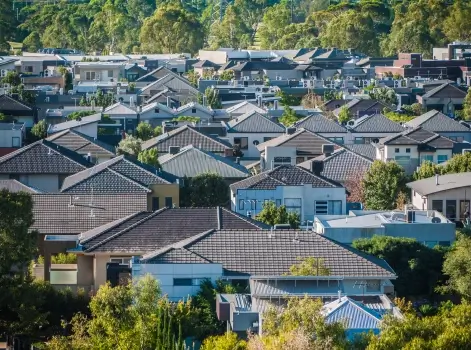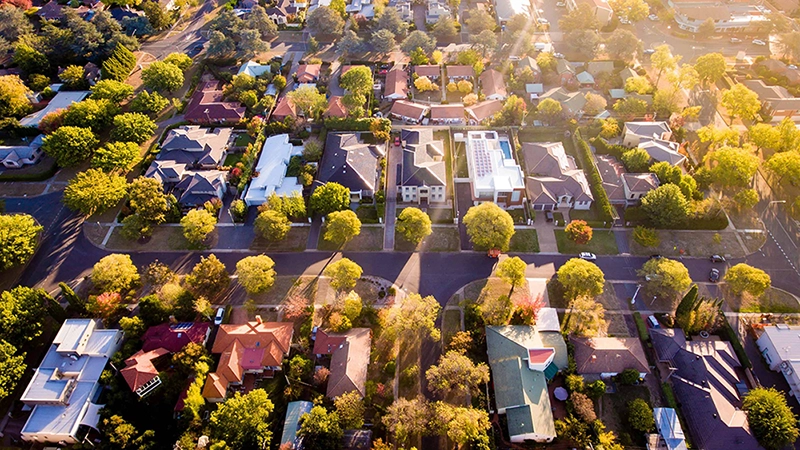Updated: 29 May, 2025
Table of Contents
- Is that a vote of no confidence in Australian property?
- The perfect storm for off the plan purchases
- Group A vs Group B: Two different risks
- Which areas have been affected?
- The Sydney backflip
- How can first home buyers get into the market?
- Is it still possible to buy inner city apartments?
- Will this affect people who want to refinance?
- Was it the right thing for NAB to do?
- Do all banks have postcode restrictions?
In a surprise move on Friday, National Australia Bank (NAB) announced that it was expanding its restricted postcode list to include many more inner city and regional areas.
The bank will now restrict lending in these areas by requiring people to have a larger deposit or more equity.
Is that a vote of no confidence in Australian property?
These are significant changes that aren’t made on a whim. NAB has put careful thought and analysis into their decision in response to deteriorating risks in these areas.
Many regional areas have a single industry economy, a high unemployment rate or have been seriously affected by the slump in the mining sector. This is causing property prices to weaken and more people to miss payments on their debts.
If you’re a homebuyer or investor, you should be cautious if you’re buying in a ‘Group A’ postcode. NAB has limited lending to just 70% of the property value (70% LVR).
The perfect storm for off the plan purchases
NAB significantly expanded their Group B postcode list in Brisbane and Perth to include the areas surrounding the CBD. In addition to this, Darwin City and the Gold Coast have been listed as a high risk area for the first time.
It’s no secret that there’s a lot of foreign investors who are unable to qualify for a bank loan meaning that they won’t be able to settle on their off the plan inner city apartments.
In its Property Pulse report, Corelogic indicated that in the next 24 months there are 231,000 units due to settle, although it’s hard to say how many of these sales will fall through.
Several of our lenders have said to us that the number of high rise units in inner city markets are a major concern to them and that there is the potential for a significant fall in prices. We’re already seeing many valuations on off the plan purchases coming in well below the purchase price.
If banks limit lending to Australians in these postcodes, it means that it’ll be tough for first home buyers to pick up the excess stock, leaving a large oversupply in inner city markets.
Group A vs Group B: Two different risks
NAB has a Group A postcode list which tends to include regional areas with an uncertain economy. In these areas, NAB limits lending to 70% LVR or 70% of the property value.
The Group B postcode list mostly contains capital city locations where the bank has seen prices rise rapidly or they’ve identified a potential oversupply of apartments. In these areas, the bank lends a maximum of 80% LVR.
Which areas have been affected?
QLD
In QLD, many regional areas have been added to the Group A postcode list (70% LVR), including:
- Taroom 4420
- Dayboro 4521
- Fraser Island 4381
- Childers 4660
- Deepwater 4674
- Turkey Beach 4678
- Biloela 4715
- Sarina 4737
- Koumala 4738
- Mackay surrounds 4741
- Nebo 4742
- Airlie Beach surrounds 4800
- Mount Coolon 4804
- Charters Towers 4820
In Brisbane, the current Group B (80% LVR) restrictions on lending in the CBD have been expanded to include several areas:
- Newstead 4006
- Albion 4010
- Chermside 4032
- South Brisbane 4101
- Woolloongabba 4102
- Southport & Labrador 4215 (Gold Coast)
WA
Group A has been expanded to include:
- Broome 6725
- Derby 6728
In Perth, the Group B restrictions on lending in the CBD have been expanded in a ring to include additional high risk suburbs:
- Highgate 6003
- East Perth 6004
- West Perth 6005
- Victoria Park 6100
- Rivervale 6103
SA
In South Australia, the Group A postcodes have been expanded to include Whyalla and surrounds, an area that has long suffered from a slowing economy. This includes the postcodes 5600, 5601, 5608 and 5609.
NT
Darwin City 800 was added to the Group B postcode list for the first time, showing that NAB is concerned about the level of development and rising prices in the CBD.
TAS
Tasmania had postcode 7030 added to NAB’s Group A postcode list meaning that loans are limited to 70% of the property value.
This one has raised a few eyebrows as this is a large postcode area with some suburbs such as Bridgewater and Brighton being right next to Hobart while other areas are quite remote so restrictions are justified.
The Sydney backflip
In August 2015, when NAB first announced its postcode restrictions, there were some surprise Sydney suburbs listed as high risk including Peakhurst, Lugarno, Campsie, Carlingford, Ryde and Putney.
While these suburbs saw prices rise quite quickly, it was because they’re great places to live and that’s unlikely to change. It didn’t seem right to restrict lending in these blue chip areas.
Now NAB has removed some parts of Sydney from Group B, allowing people to borrow up to 95% again.
The removed areas include:
- Glenwood, Parklea, Stanhope Gardens 2768
- East Ryde, Macquarie Park, North Ryde 2113
- North Parramatta, North Rocks 2151
How can first home buyers get into the market?
Considering many capital cities have seen meteoric rises in house prices in the last few years, it’s unlikely that many home owners will be affected by these latest postcode restrictions.
If you currently own a home and you’re looking to refinance, buy an investment property or upgrade to a bigger home, you will have been able to build plenty of equity and will still qualify for a loan.
On the other hand, first home buyers struggle to get a 5% deposit let alone a 20% deposit!
The good news is that some other lenders have no location restrictions and it’s still possible for first home buyers to buy a property with no deposit with a guarantee from their parents.
Is it still possible to buy inner city apartments?
Yes! Some other banks can lend up to 95% for inner city apartments.
The question is: do you want to take the risk?
WBP Property Group, a property valuer, recently did a study of 1,700 off the plan properties that they had valued for banks.
They found that up to half of them had a value that came in below the purchase price! Considering the risk of the current market and the current problems with valuations, it’s a big risk.
Will this affect people who want to refinance?
Considering that there’s so many banks out there with different interest rate specials and lending policies, we don’t think it will be a serious problem for refinancers.
People in Group A postcodes in particular may choose to switch banks rather than be limited to borrowing 70% LVR by NAB.
Was it the right thing for NAB to do?
We believe that it was.
The last thing Australia wants is to have economic chaos caused by our major banks taking large risks. A strong banking system means a strong economy.
It also helps you as a borrower because you’re more aware that there are potential risk in particular real estate markets. By limiting your borrowing in these locations, the bank may prevent you from ending up in a situation where you have negative equity if there is a fall in the market.
Do all banks have postcode restrictions?
Not all banks use this method of managing their risk. Some will lend up to 95% of the property value in any location in Australia although they will still rely on the comments made by the bank valuer.
If the valuer says the market is at risk of a fall, the bank will make a judgement call based on the borrower’s overall financial position.
If they’re a low risk, the bank may approve the loan. If the borrower isn’t as strong then the bank will decline the application.
They’re different methods and they have their pros and cons but they both achieve the same end result.









